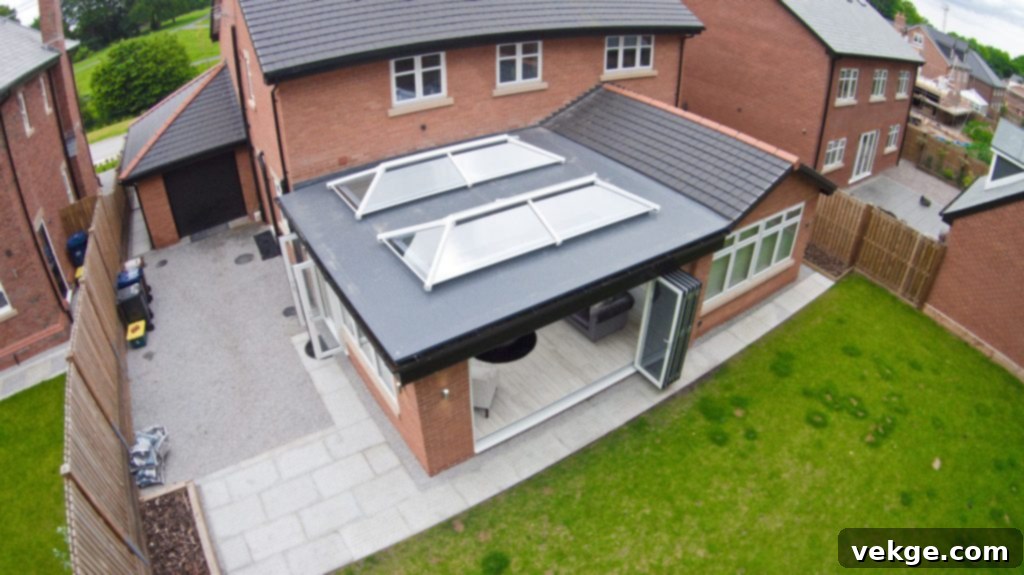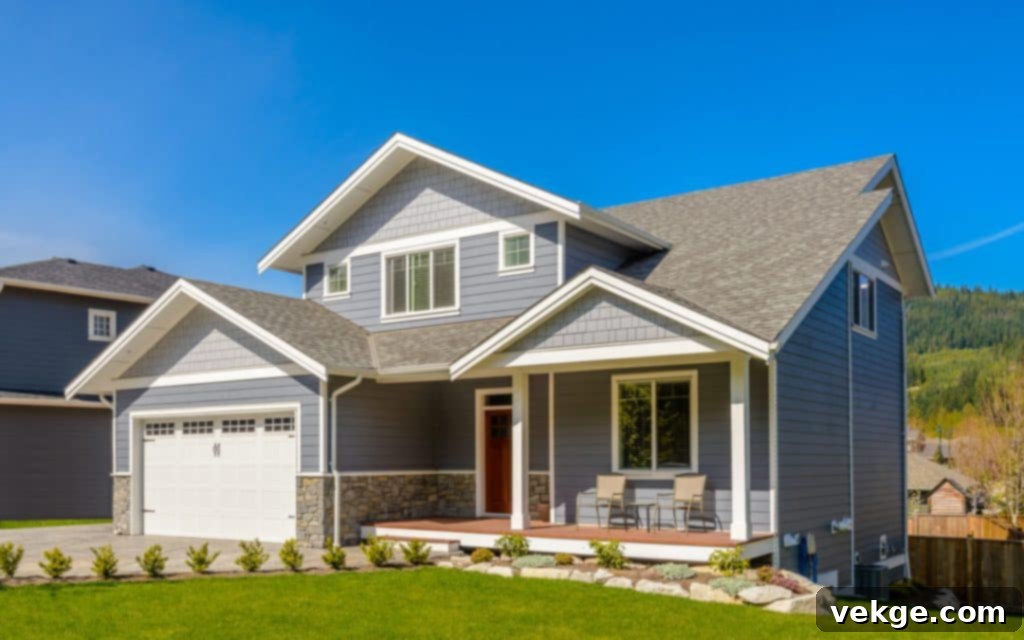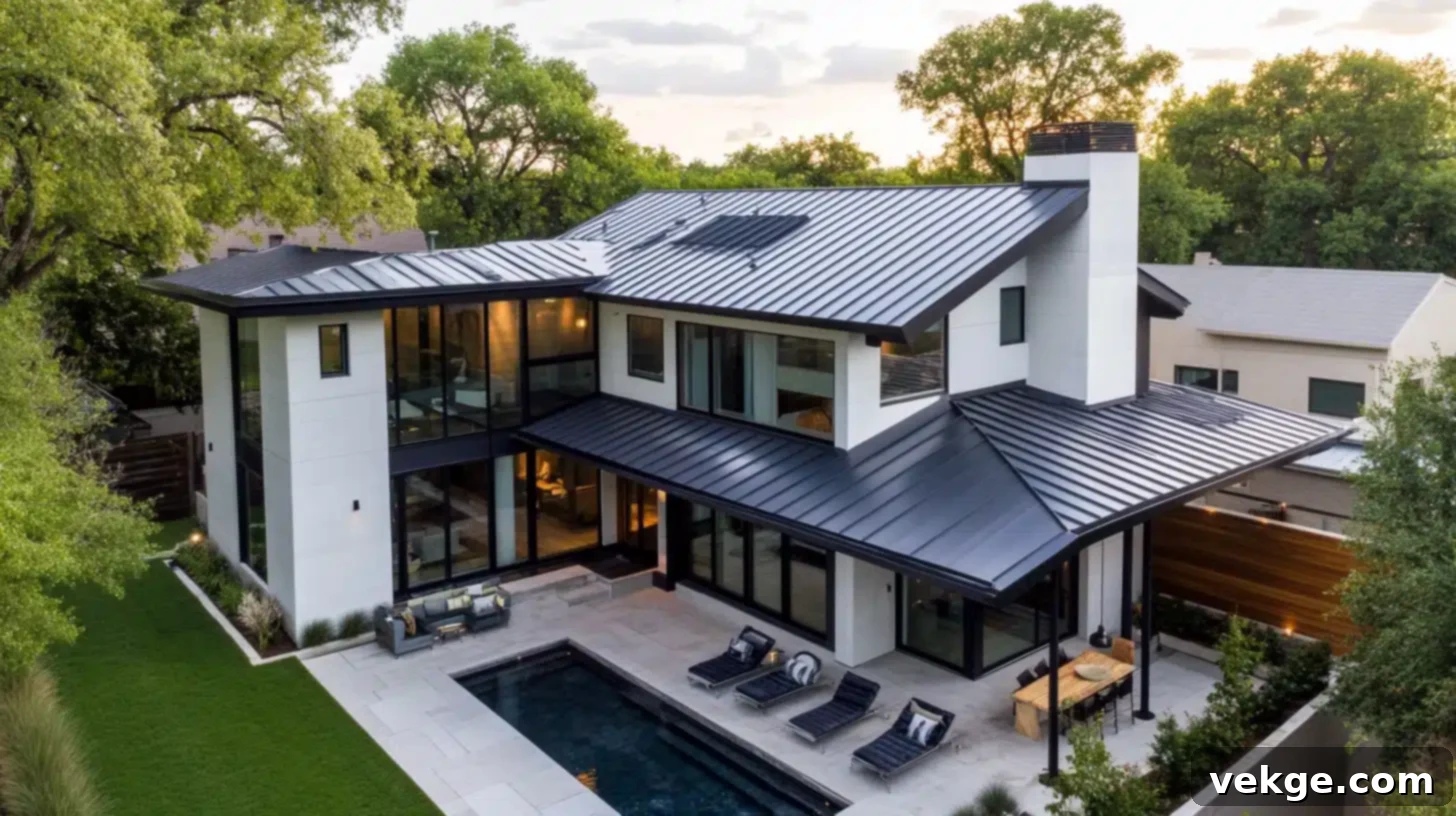Flat Roof vs Pitched Roof: A Comprehensive Guide to Choosing the Best for Your Home or Business
Choosing the right roof for your property is one of the most significant decisions a homeowner or business owner can make. The roof isn’t just a protective covering; it’s an integral part of your building’s structural integrity, aesthetic appeal, and long-term cost efficiency. When considering new construction or a complete roof replacement, understanding the fundamental differences between flat roofs and pitched roofs is absolutely crucial. Each type offers distinct advantages and disadvantages that can profoundly impact your building’s look, functionality, maintenance requirements, and overall value.
Whether you’re exploring options for a new installation or in urgent need of professional roof repair in Wilmington, NC, entrusting your roofing needs to a reputable provider is paramount. This detailed guide will delve deep into the distinctions, benefits, drawbacks, installation processes, weather resilience, and cost implications of both flat and pitched roofing systems, empowering you to make a truly informed decision that aligns with your specific needs and local conditions.
What’s the Essential Difference Between a Flat Roof and a Pitched Roof?

Understanding the Slope: Flat vs. Pitched Roof Design
The most defining characteristic separating a flat roof from a pitched roof is its slope. While a flat roof appears level to the naked eye, it actually incorporates a minimal slope, typically around 1/4 inch per foot, to facilitate water drainage. This subtle inclination is essential to prevent water pooling. In contrast, a pitched roof features a much more pronounced angle or gradient, designed to shed water and debris efficiently due to gravity.
This fundamental difference in slope dictates much more than just water flow; it influences the entire roof design, architectural possibilities, and the overall aesthetic impact on a building. Flat roofs are commonly associated with modern, minimalist, and often industrial architecture, favoring clean lines and contemporary aesthetics. Pitched roofs, on the other hand, are the hallmark of traditional, classical, and most residential building styles, offering a timeless and often more decorative appearance.
Choosing the Right Design for Your Property: Practicality Meets Preference
Deciding which roof design is right for you involves evaluating several key factors, including the building’s primary purpose, the local climate, and your personal architectural preferences. Flat roofs are frequently favored for commercial and industrial structures due to their practical advantages. They offer easy access for maintenance of HVAC units, provide potential space for rooftop installations like solar panels, green roofs, or even accessible patios, maximizing the building’s footprint.
Conversely, pitched roofs are the preferred choice in regions that experience significant rainfall or heavy snowfall. Their sloped design is inherently superior for drainage, allowing water, snow, and ice to slide off easily, thereby preventing accumulation and potential damage. Homeowners, in particular, should carefully consider these climatic factors alongside their aesthetic desires when weighing the options between a flat roof and a pitched roof.
How Roof Design Impacts Curb Appeal and Architectural Style
The design of your roof plays a pivotal role in shaping the building’s curb appeal and overall architectural style. Flat roofs lend themselves to a sleek, contemporary, and often minimalist look, which can be highly appealing in urban or modern settings. They contribute to a clean, uncluttered skyline and can provide a versatile canvas for innovative architectural features.
Pitched roofs, with their varied angles and material options, evoke a classic, timeless, and often more inviting aesthetic. From the sharp angles of a gable roof to the more complex lines of a hip or mansard roof, pitched designs offer immense stylistic diversity. The choice between a flat and pitched roof can significantly enhance or detract from the desired style of a building, making it a critical consideration for both architects and property owners aiming for a specific visual identity.
Pros and Cons of Flat and Pitched Roofs: A Balanced View

Evaluating Flat Roof Pros and Cons
Flat roofs come with a distinct set of advantages. They are generally more cost-effective to install initially, requiring fewer materials and a less complex construction process compared to pitched roofs. This often translates to lower labor costs, making them an attractive option for budget-conscious property owners or large commercial projects. Beyond cost, their primary benefit is the practical, usable space they create. This accessible area can be utilized for mechanical equipment, rooftop gardens, solar panel arrays, or even recreational spaces, adding functional value to the property.
However, flat roofs are not without their drawbacks. Due to their minimal slope, they are inherently more susceptible to drainage issues and water pooling, which can lead to leaks if not properly designed and maintained. This vulnerability means they typically require more frequent inspections and meticulous maintenance to ensure longevity and prevent costly water damage. The materials used, such as Modified Bitumen, EPDM, or TPO membranes, also have varying lifespans and require specific installation expertise.
Pitched Roof Pros and Cons Unpacked
Pitched roofs excel in areas where flat roofs face challenges, primarily due to their superior drainage capabilities. Their sloped design allows rainwater, snow, and debris to flow off effortlessly, significantly reducing the risk of leaks, water accumulation, and structural damage. This natural shedding mechanism often results in lower maintenance requirements over their lifespan compared to flat roofs, as standing water issues are rare.
On the downside, pitched roofs typically entail a higher initial cost. This is due to the increased complexity of the roofing system, which involves building a more intricate framework of rafters or trusses, and the use of more diverse and often more expensive materials like shingles, tiles, or metal panels. While the upfront investment is greater, the enhanced durability, longer lifespan (often 20-50+ years depending on material), and superior weather resistance can make a pitched roof a worthwhile long-term investment.
Which Roof Requires Less Maintenance? A Crucial Consideration
When comparing maintenance demands, pitched roofs generally require less frequent attention than their flat counterparts. The inherent slope facilitates excellent drainage, dramatically minimizing the risk of water damage, mold growth, and leaks associated with standing water. Routine maintenance for a pitched roof typically involves gutter cleaning, occasional shingle or tile replacement, and inspecting for storm damage, which can often be addressed less frequently.
Flat roofs, conversely, demand more vigilant and regular inspections. It’s crucial to routinely check for any signs of water pooling, ensure scuppers and internal drains are clear of debris, and inspect the membrane for punctures, cracks, or lifting. Neglecting these maintenance tasks can quickly lead to severe water ingress and structural issues. Therefore, homeowners and business owners must weigh the ongoing maintenance commitment when making their decision.
How is Roof Installation Different for Flat and Pitched Roofs?
The Process of Flat Roof Installation
Flat roof installation involves a specialized process focused on creating a durable, watertight membrane system over a slightly sloped structural deck. The initial step often includes preparing the substrate, followed by the application of insulation layers to meet energy efficiency standards. A crucial aspect of flat roof installation is ensuring the creation of positive drainage; this may involve tapered insulation or structural sloping to direct water towards drains or scuppers.
The final waterproofing layer is then applied using various materials such as Modified Bitumen (torch-applied or self-adhered), EPDM (a rubber membrane), TPO (thermoplastic polyolefin), or PVC (polyvinyl chloride). These membranes are typically mechanically fastened, fully adhered with adhesive, or ballasted with stone. While seemingly simpler due to the lack of complex angles, precision is paramount to prevent future leaks, making the choice of material and an experienced installer critical for optimal roof performance and longevity.
Understanding Pitched Roof Installation
Pitched roof installation is significantly more complex due to its angled design and layered structure. The process begins with constructing a robust framework of rafters or pre-fabricated trusses, which dictate the roof’s slope and shape. This framework is then covered with sheathing (plywood or OSB), creating a solid deck. An underlayment (felt paper or synthetic material) is then applied for an additional layer of moisture protection.
Following this, the chosen roofing material, such as asphalt shingles, clay tiles, concrete tiles, metal panels, or slate, is carefully installed. Each material requires specific installation techniques and tools, often involving intricate layering, flashing details around chimneys and vents, and specialized fastening. This complexity demands highly skilled labor to ensure the roof is not only structurally sound and aesthetically pleasing but also completely weather-tight and compliant with building codes. Although more labor-intensive and time-consuming, the result is a durable and beautiful roof designed to withstand diverse weather conditions for decades.
Key Considerations During Any Roof Installation
Regardless of whether you choose a flat or pitched roof, several critical factors must be thoroughly considered during the installation phase to ensure a successful, long-lasting roofing system:
- Roofing Material Selection: The choice of material should align with your budget, desired aesthetic, the roof’s design, and the local climate. Research material durability, warranty, and long-term performance.
- Local Climate Conditions: Consider the prevailing weather patterns in your area. Does it experience heavy snow, intense rain, high winds, or extreme UV exposure? The chosen roof system and materials must be resilient enough to handle these challenges.
- Building’s Architectural Style: The roof should complement and enhance the existing architectural style of your home or business, contributing positively to its curb appeal.
- Ventilation and Insulation: Proper ventilation in the attic or roof assembly is crucial for preventing moisture buildup, extending the life of your roof, and improving energy efficiency by regulating indoor temperatures. Adequate insulation is equally vital for thermal performance.
- Choosing the Right Contractor: Always work with experienced, licensed, and insured roofing contractors. Their expertise ensures correct installation, adherence to safety standards, and proper warranty activation for materials and workmanship.
How Do Flat and Pitched Roofs Handle Different Weather Conditions?
Rainfall and Drainage for Various Roof Types
The ability to effectively manage rainfall and drainage is a primary function of any roof. Pitched roofs inherently excel in this aspect; their significant slope allows rainwater to quickly flow downwards and off the roof into gutters and downspouts. This efficient shedding mechanism minimizes the risk of water pooling, hydrostatic pressure, and the subsequent potential for leaks and water damage, even during heavy downpours.
Flat roofs, by contrast, rely entirely on a meticulously designed drainage system to prevent water accumulation. This includes strategic placement of internal drains, scuppers, and a carefully calculated positive slope to direct water away. Regular maintenance, such as clearing drains of debris and inspecting for any blockages, is absolutely crucial for flat roofs to avoid ponding water, which can stress the membrane, lead to leaks, and drastically shorten its lifespan. A neglected flat roof can quickly become a source of significant problems during rainy seasons.
How Different Roofs Handle Snow and Ice Accumulation
In regions prone to cold winters, the roof’s ability to manage snow and ice is a critical factor. Pitched roofs hold a significant advantage here. Their sloped surfaces naturally shed snow, preventing heavy accumulation that could lead to structural stress. Furthermore, the design of pitched roofs, especially when paired with proper attic ventilation, helps mitigate the formation of ice dams. Ice dams occur when heat escapes through the roof, melting snow that then refreezes at the colder eaves, potentially causing water to back up under shingles and into the building.
Flat roofs, conversely, are more susceptible to snow buildup. Heavy snowfall can impose considerable weight on the roof structure, requiring the roof to be engineered for specific snow load capacities. As snow melts slowly, it can lead to prolonged ponding, increasing the risk of leaks as water seeks any potential entry point. Homeowners in snowy climates considering a flat roof must account for these challenges and often need to implement professional snow removal strategies to protect their investment and ensure safety.
Overall Weather Resistance: Flat vs. Pitched Roofs
When evaluating overall weather resistance, pitched roofs generally offer superior protection against a broader range of harsh weather conditions. The inherent slope provides better resistance to high winds, allowing wind to flow over the surface more smoothly, and its layered construction often offers robust protection against rain, snow, and hail. Materials like metal, slate, and tile, common on pitched roofs, are renowned for their exceptional durability and longevity in extreme weather.
Flat roofs are well-suited for milder climates and offer effective protection when properly installed and maintained. However, in areas with severe weather, they may require additional measures to enhance their resilience, such as reinforced membranes, robust flashing details, and diligent maintenance. The choice between a flat and pitched roof should always be heavily influenced by the local climate and anticipated weather challenges to ensure optimal performance and a long, trouble-free lifespan for your roofing system.
How Much is the Cost of a Flat or Pitched Roof?
Initial Cost: Flat Roof vs. Pitched Roof Upfront Investment
The initial cost of a roof is often a primary consideration for property owners. Generally, flat roofs tend to be more affordable to install upfront. This lower initial cost stems from several factors: they typically require fewer complex structural components (like trusses), use simpler and sometimes less expensive materials (e.g., single-ply membranes), and the installation process can be less labor-intensive. This makes them a popular choice for large commercial projects or budget-conscious residential applications where a modern aesthetic is desired.
Pitched roofs, however, usually demand a higher upfront investment. The complexity of their framing (rafters, trusses), the additional square footage of roofing material needed due to the slope, and the use of often more premium materials like architectural shingles, metal, tile, or slate, all contribute to a greater initial expense. While the price tag is higher, this investment often translates into significant long-term benefits in terms of durability, weather resistance, and reduced maintenance, which can offset the initial cost over the roof’s extended lifespan.
Long-term Maintenance Cost for Each Roof Type
Beyond the initial installation, understanding the long-term maintenance costs for each roof type is crucial for a complete financial picture. Flat roofs, due to their susceptibility to drainage issues and water pooling, often incur higher ongoing maintenance expenses. This includes the need for regular inspections, routine cleaning of drains and scuppers, and more frequent repairs to patch membrane damage, address flashing failures, or fix leaks caused by standing water. Neglecting these tasks can lead to expensive structural damage.
Pitched roofs, with their inherent ability to shed water and debris, generally require less frequent and less intensive maintenance. While still needing occasional gutter cleaning, shingle replacement, and inspections for storm damage, the robust design of pitched roofs often means fewer critical interventions are required. This lower long-term maintenance burden can significantly offset the higher initial installation cost, proving to be more economical over the entire lifecycle of the roof.
How Does Roof Type Affect Home Value and Resale Potential?
The type of roof on a property can significantly influence its overall value and appeal to potential buyers in the real estate market. Pitched roofs, particularly those with durable and aesthetically pleasing materials like architectural shingles, tile, or metal, are often perceived as a major asset. Their classic look, proven durability, and superior weather protection can enhance a home’s curb appeal, boost its resale value, and attract a broader range of buyers, especially in traditional residential markets.
Flat roofs, while offering a sleek, modern aesthetic and versatile utility space, may not appeal to all buyers. In areas with harsh weather or a strong preference for traditional architecture, a flat roof might be viewed with more caution due to perceived maintenance challenges or a less conventional appearance. Homeowners should consider how their chosen roof type aligns with local market expectations and future buyer demographics, as a well-chosen roof can be a powerful selling point, while a mismatched one might require more effort to market effectively.
